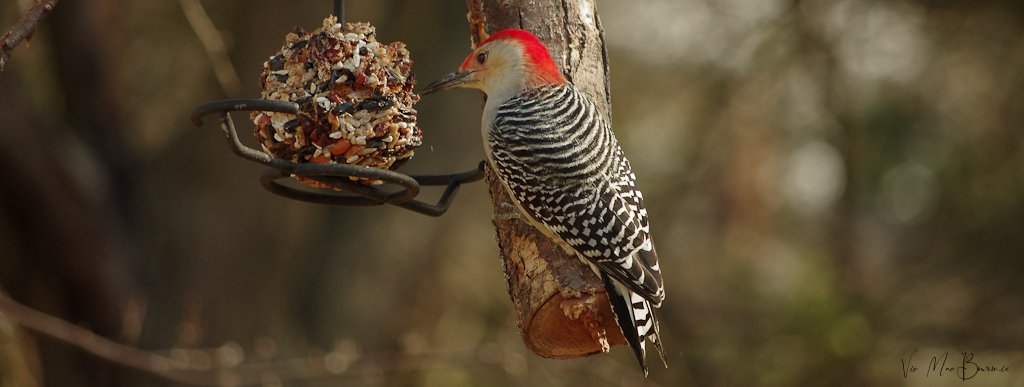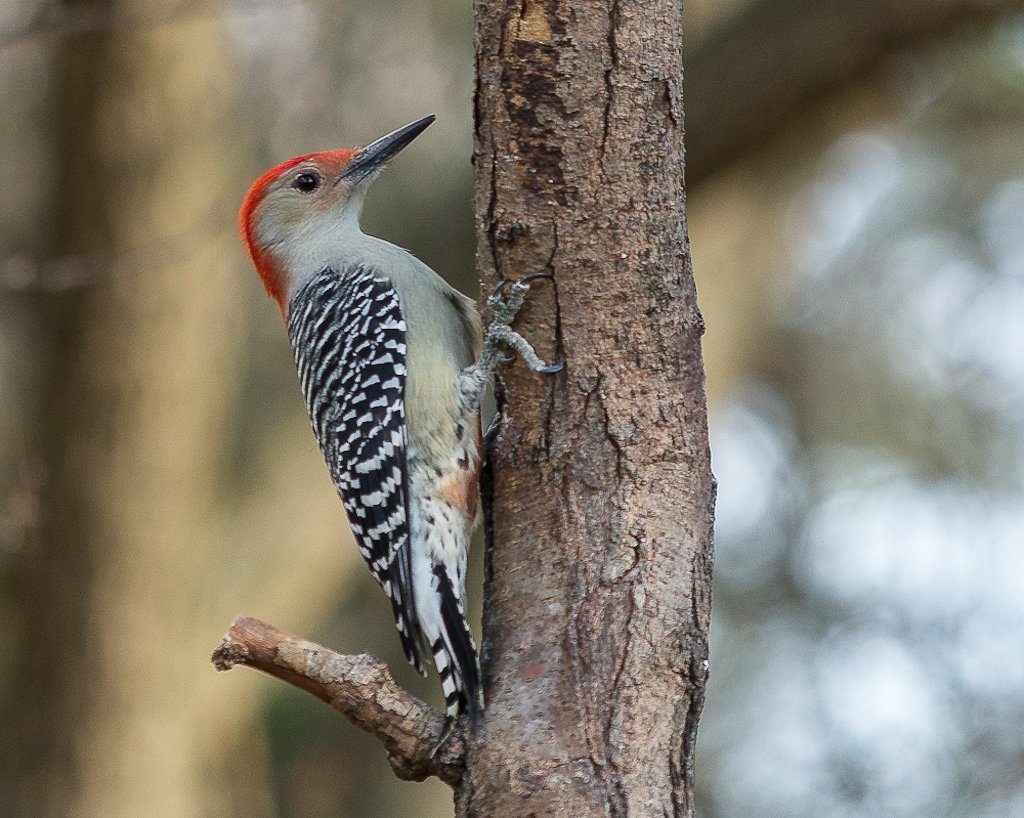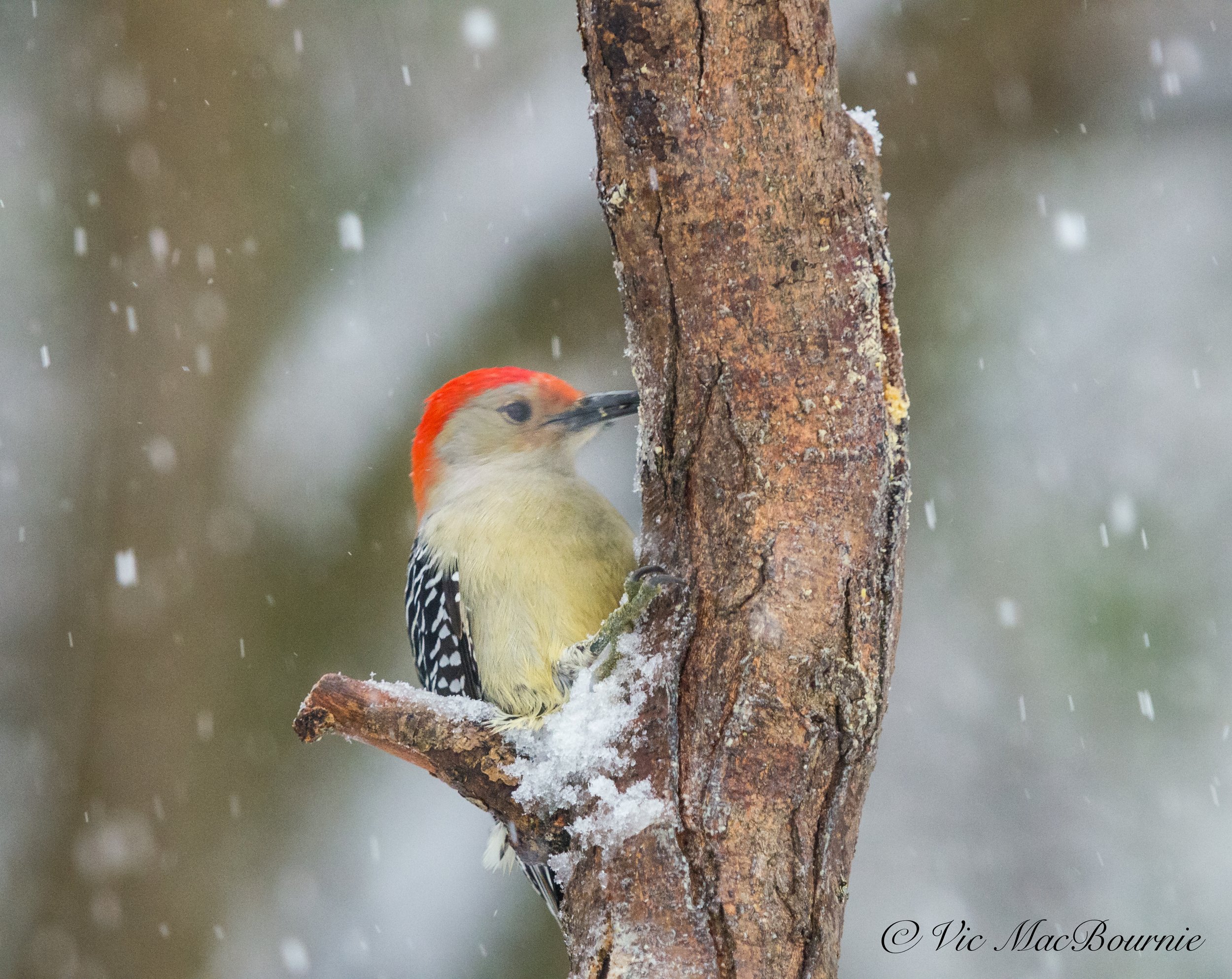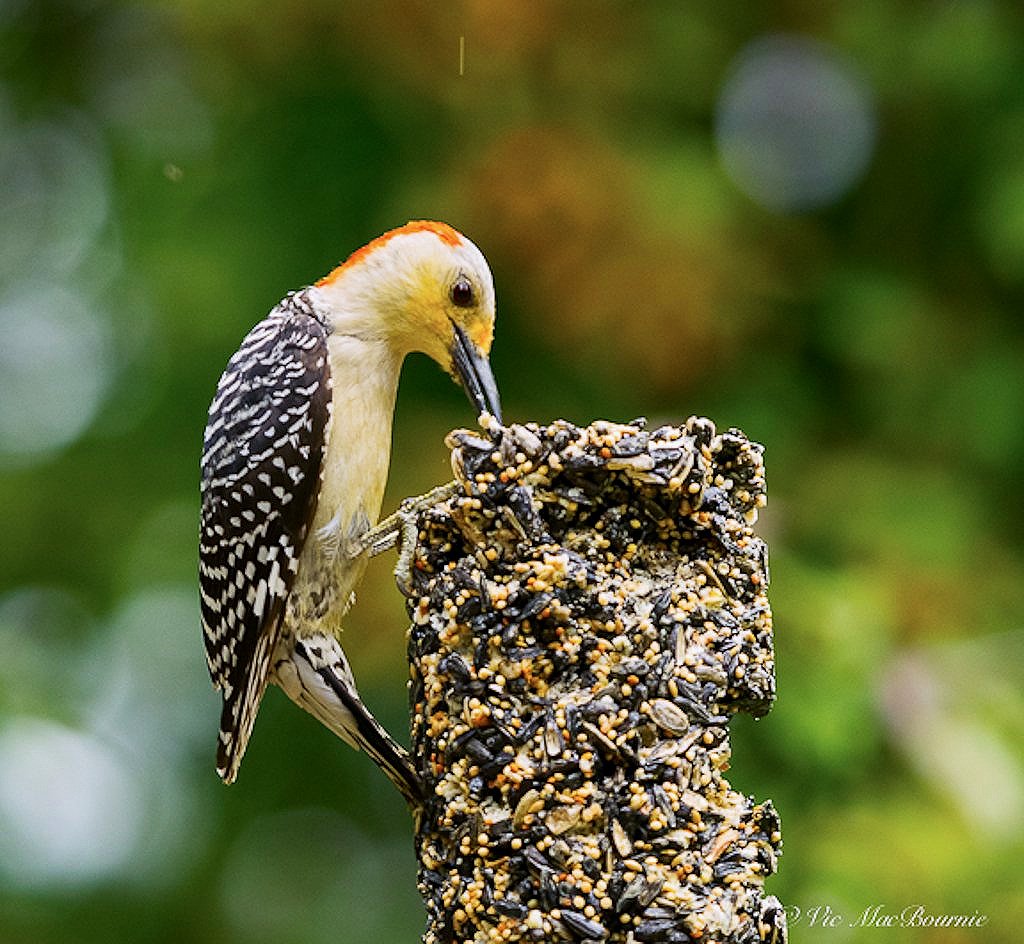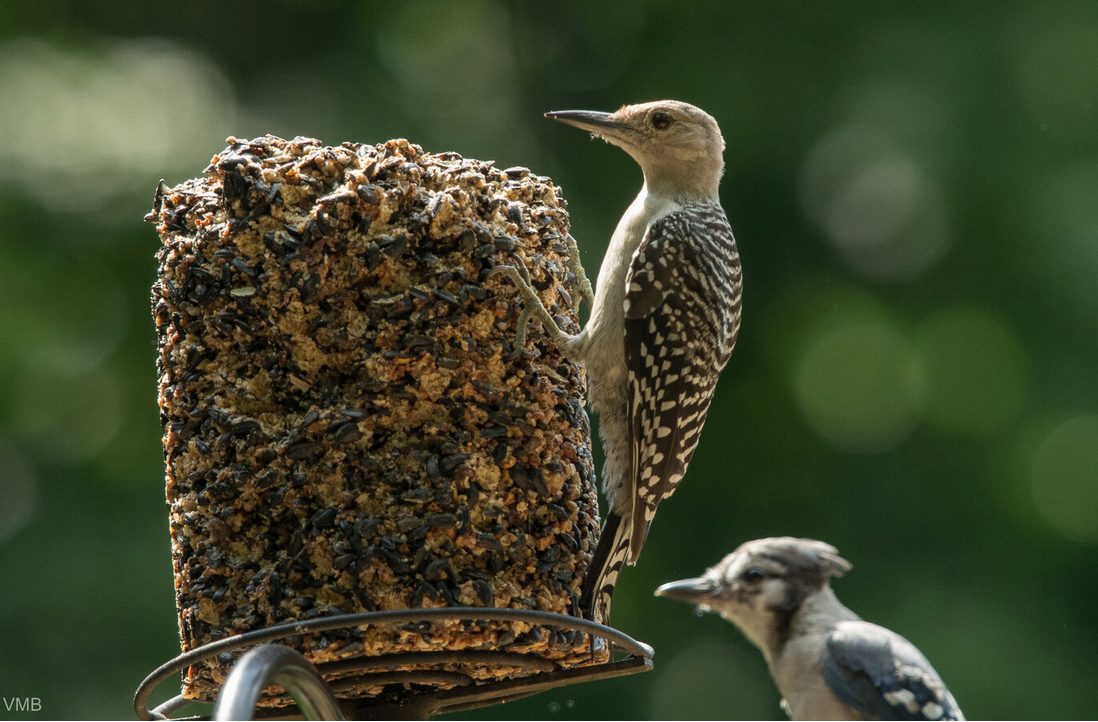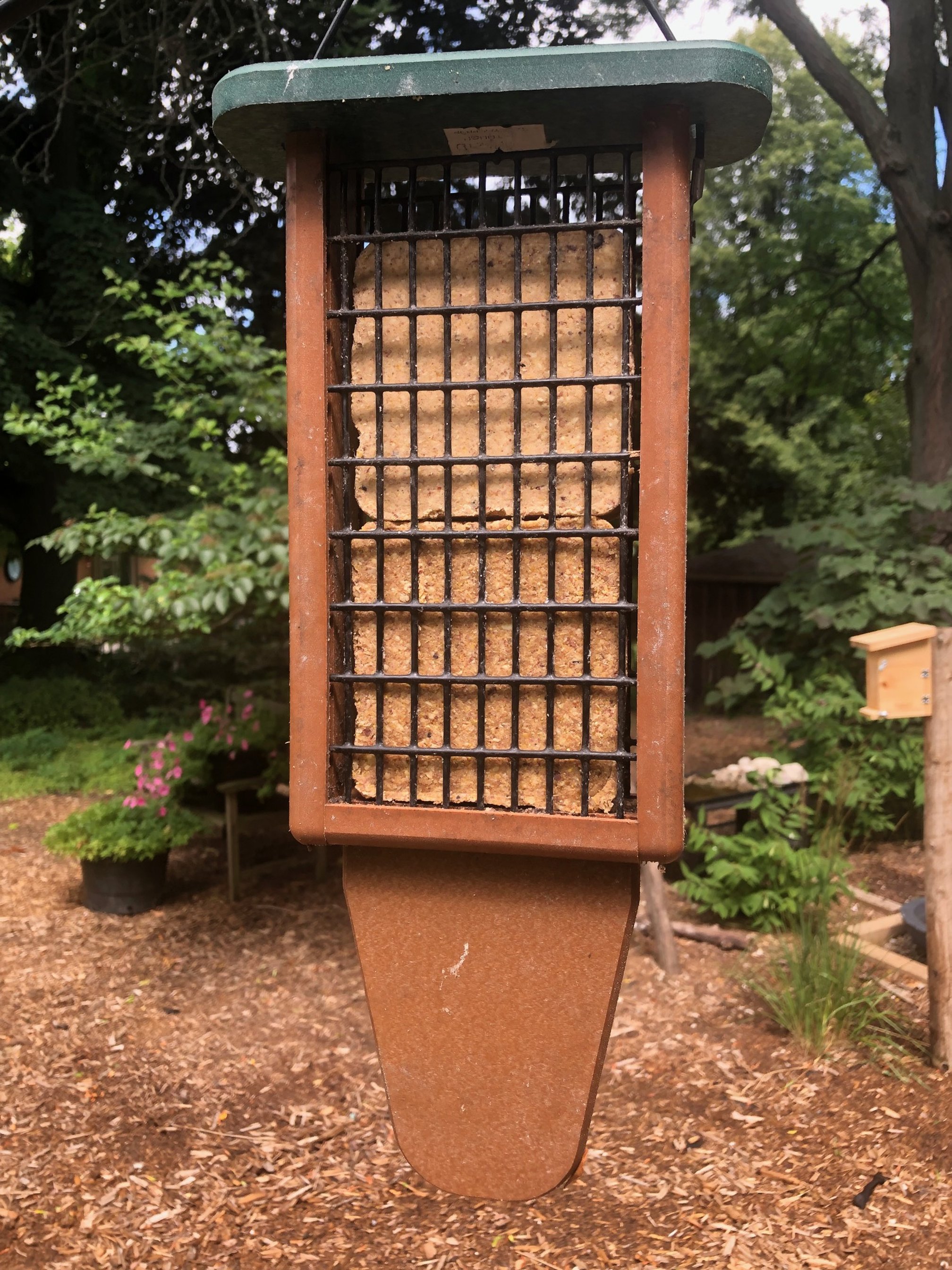How to attract Red-bellied woodpeckers to your woodland garden
Identifying Red-bellied woodpeckers can be tricky
The Red-bellied woodpecker is a regular at our bird feeders thanks to one special food source and a delivery system that keeps it coming back throughout spring, summer, fall and, especially, winter.
This woodland species is an attractive, medium-sized, black-and-white barred woodpecker with a name that might suggest a bright red belly shining for all to see but, in reality, the red on the belly is a barely perceptible hint of reddish orange tucked closer to the bird’s rump than its belly.
Given that the splash of red on the birds’ belly is barely perceptible, you could be forgiven if you wonder how this bird even got its name.
This hidden patch of red on its belly is the primary reason the bird is often misidentified in the field by new birders expecting to see a big bright red belly similar to that of an American Robin.
Even trying to identify the males from the females is quite difficult.
The main difference is that the males have a red crown and nape on their heads, while the females only have the red nape and lack the red crown. (In other words, only the males have the bright red head patch from their foreheads to the base of their neck. Females have red only on their neck. See images below to see the differences between both male and female Red-bellied woodpeckers.)
Red-headed vs Red-bellied woodpeckers
This flashy red on the Red-bellied woodpeckers’ rounded heads often leads to a further misidentification with the Red-headed woodpecker.
The vibrancy of the Red-bellied woodpecker’s head may have originally resulted in them taking the name “red-headed” if it was not already taken by its fellow, even more impressive, red-headed cousin.
The red-headed woodpecker is actually quite rare in comparison and sports a complete, almost blood-red head and solid black body with white tail feathers and a bright white breast.
The red-bellied woodpecker is also easily mistaken for a Hairy Woodpecker, which is about the same size.
For more on identifying different woodpeckers, check out my earlier post here.
How big is the Red-bellied woodpecker?
The Cornell Lab of Ornithology describe the Red-bellied woodpecker’s size as somewhere between an American robin and a common crow.
The Northern Flicker, which share some of the same characteristics but is more buff in colour, is slightly larger than the Red-bellied woodpecker.
Both the male and female red-bellied woodpecker measure about 9.5 inches (24 cm) long, and weigh in at between 2.0-3.2 oz (56-91 g). Their wingspan stretches out to between 13.0 and 16.5 inches (33-42 cm).
Red-bellied woodpeckers are happy to feed from the common hopper-style feeders, but they much prefer the large seed cyclinders of compressed peanuts and sunflower seeds that sit on top of our bird-feeding station.
How to identify Red-bellied woodpeckers
When trying to identify these birds, it is probably better to focus on the banded, zebra-like pattern on their back, instead of looking for their faint reddish splash of colour on their bellies.
Both the male and female have sturdy, thick black bills that are excellent for drilling for food in the bark of hardwood trees. Their legs and feet are gray.
What is the range of the Red-bellied woodpecker?
These birds may be common in the eastern woodlands but they are actually birds of the southeast regions stretching down as far south as Florida. According to studies, in the first half of the 20th century, this bird was declining in its more northern limits.
More recently, however, the Red-bellied woodpecker is actually expanding its numbers farther into the north reaching the southern limit of eastern Canada including Quebec and even Newfoundland, where they are more rare.
Backyard bird feeders are often cited as a main reason for this expansion northward.
Red-bellied woodpeckers numbers are reported as stable and in the range of about 10 million breeding birds.
These birds are more or less resident birds that do no not migrate any great distances. Reports show that some birds may move to a more northerly location in fall and remain through winter.
What is the oldest Red-bellied woodpecker identified?
The oldest known woodpecker was a male found in Georgia where its band indicated it was more than 12 years old.
Most of the woodpeckers, however, do not live more than 11 years with a range of between 4-11 years depending on the type and their range.
Most of the Red-bellied diet consists of insects and spiders, but when insects are more rare, they are also happy to dine on other foods, including seeds, berries and fruit. In fact, during some seasons they eat up to 50 per cent seeds (including pine cones and acorns in the wild).
In the fall and winter they will also eat plenty of fruit such as wild grapes and other berries that remain on the trees and shrubs throughout the winter.
It’s always a good idea to include berry- and fruit-producing trees and shrubs to provide natural food for backyard wildlife.
(Be sure to check out my complete post on using native flowers, shrubs trees and vines to feed birds and other wildlife.)
What do Red-bellied woodpeckers eat in our backyards?
In our backyard, the Red-bellied woodpeckers are quick to come to the feeders to fill up on sunflower seeds and peanuts.
Red-bellied woodpeckers are happy to feed from the common hopper-style feeders, but they much prefer the large seed cyclinders of compressed peanuts and sunflower seeds that sit on top of our bird-feeding station.
I purchase the cylinder specifically labelled for woodpeckers and they seem to do the trick.
A dish of dried or live meal worms will certainly help get their attention and compressed seed cyclinders that include meal worms, berries, nuts and sunflower seeds are always welcomed by these noisey birds.
These large cylinders are by far their favourite, not only for their easy source of seeds, but for the ease that the birds can get at the food.
The cylinders provide a very natural perch for the woodpeckers to take advantage of their large beaks to extract the seeds.
Sitting in my Tragopan photographic blind watching the woodpeckers working the seed cylinder is fascinating with bits of seed flying in all directions. The cylinders keep the birds at the location for a number of minutes, making viewing and photographing them a real joy.
(Be sure to check out my comprehensive post of Using seed cylinders in the garden. Not only are they a great food source for birds, but because they hold the seed better than hopper feeders, they help to deter mice and rats from eating seeds that are thrown to the ground by Jays and other picky birds.)
As winter progresses, I like to add more high-protein suet to their diet.
Suet bricks are popular and easy to add to the specially made cage feeders, but don’t overlook DIY suet logs that are easy to make from an old branch. Just drill some holes in it and pack the holes with suet for a more natural feeder that works particularly well if you are trying to photograph the birds in a more natural setting.
I like to use a product called bark butter to work into the holes. It is particularly attractive to a host of backyard birds.
(Check out my separate post on the benefit of Using bark butter to attract woodpeckers.)
Because they are quite large woodpeckers, the suet feeders with the tail prop work extremely well and are highly recommended. The recycled resin feeders, while they are more expensive, are easier to clean and will last a lifetime. This Songbird Essential suet feeder from Amazon combines the recycled plastic with a large tail prop for larger woodpeckers including The Pileated woodpeckers. Gardener’s Supply Company has their own take on the suet feeder with prop also in a recycled resin.
In addition, suet feeders that force the birds to hang upsidedown while they are feeding also work well and they are particularly good if squirrels regularly feed on your suet.
(Check out my post on why Modern resin bird feeders are a better choice than wood feeders.)
And, don’t be surprised to see a Red-bellied woodpecker on one of your hummingbird or a Baltimore Oriole feeders during the summer.
Not only will they help themselves to orange slices and the grape jelly set out for the Orioles, these woodpeckers have discovered the sweet nectar in the feeders and will help themselves to the instant source of energy. They may also be attracted to insects that are constantly around the feeders.
(Check out my earlier post on attracting Baltimore Orioles and another post on attracting hummingbirds to your garden.)
A snag or old dying tree creates an ideal habitat for woodpeckers and other tree-dwelling birds.
Dead trees (snags) are important habitat for Red-bellied woodpeckers
Woodpeckers are tree-cavity nesters, so it’s important to leave dead trees (snags) in your garden for them.
In a natural setting, these birds will typically nest in a dead tree or, in more suburban areas where dead trees are harder to come by, in a rotting fencepost or even in the side of a wood-sided home if given the opportunity.
They like to nest less than 50 feet above ground but have been known to nest more than 100 feet above ground.
They have also been known to use larger nest boxes in more urban settings and some specialty bird stores sell size-appropriate boxes.
The importance of leaving dead trees in the yard cannot be underestimated. Not only may you discover a pair nesting in the tree, but the dead tree offers hiding places for a host of insects the woodpeckers will feed on with their long, sticky, forked tongue that can actually protrude as much as 2 inches into crevices to pull out insects and beetle larvae hiding in the snags.
In addition, woodpeckers, along with other birds like Chickadees and Nuthatches, also store food in the crevices of tree bark and snags to snack on later when food is more scarce.
(Be sure to check out my comprehensive post on why we should leave dead trees in our yards.)
Do Red-bellied woodpeckers mate for life?
Unlike blue jays and other birds, Red-bellied woodpeckers do not mate for life, but they are monogamous during a mating season. They usually pair up in late winter and remain together during the nesting season. They will find a new mate the following year.
The Red-bellied woodpecker breeds once per year, usually in March or April, when the female lays an average of 4 eggs. About 12 days later the babies begin to emerge and have fledged the nest within about 27 days. They remain around their parents for between 2 and 10 weeks before going out on their own entirely.
Red-belly woodpecker wrap up
Attracting Red-belly woodpeckers is not really difficult if you are lucky enough to live in their range. It helps if you are also lucky enough to live near a forested area or have created a large woodland-style garden where these birds can feel at home.
Include large snags, berry and fruit trees and vines, a reliable source of water and good quality sunflower and nuts at your bird-feeding station. A large seed cylinder and suet placed into a resin feeder with a tail prop will go a long way to attract these very vocal and fun birds to your yard.
And, while they are setting up residence, don’t forget that their voracious appetites for insects and spiders will help to keep their numbers down.

